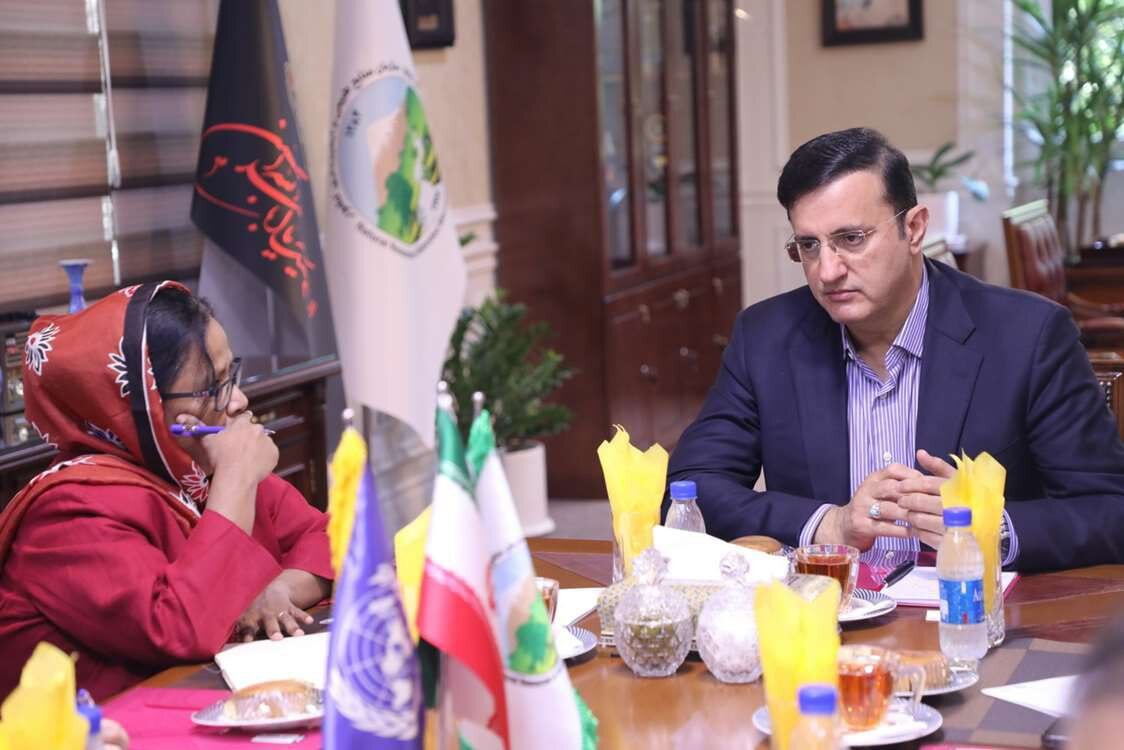Iran, UNDP explore ways to preserve natural resources, address SDSs

TEHRAN – The head of the Natural Resources and Watershed Management Organization, Ali Teymouri, and the resident representative ad interim for the United Nations Development Program (UNDP) in Iran, Ayshanie Medagangoda-Labé, have discussed ways to boost joint efforts on managing natural resources and mitigating climate change impacts, particularly sand and dust storms.
During a meeting held on Monday, Teymouri elaborated on the challenges the country faces due to its arid and semi-arid conditions, highlighting the significance of global collaborations for the preservation and restoration of natural resources, according to the Ministry of Agriculture’s website.
Referring to the fact that deserts constitute some 32 million hectares of 135 million hectares of natural land across the country, Teymouri urged the UNDP to cooperate with the country in implementing watershed management plans and mitigating critical dust hotspots.
The official also announced the readiness of the Natural Resources and Watershed Management Organization to cooperate with the UNDP office within the framework of the organization’s goals and missions.
Medagangoda-Labé, for her turn, expounded on the domains of cooperation between the UNDP and Iranian government institutions. The official proposed establishing microcredit funds in provinces and local regions as an effective step to expand joint efforts.
Referring to the complexity of managing natural resources, she stressed the need to benefit from the capacities of local communities.
The official also said that the UNDP office will strive to minimize the impacts of sanctions on Iran’s environment and receive the country’s financial quota for climate change.
She went on to state that the UNDP office is consulting with the financial funds to present proposals in the fields of water, drought, climate change, dust storms, and desertification.
At the end of the meeting, the two sides highlighted the expansion of ties on combating SDSs through pilot and small-scale projects, and decided to continue discussions to explore the potential for fostering collaborations.
Active diplomacy needed to address transboundary SDSs
Dust storms are major environmental challenges that adversely impact food security, human health, and the sustainable development process at national and regional levels.
Referring to the fact that the sources of the sand and dust storms impacting Iran are located outside the country, an official with the Department of Environment (DOE) has underlined the role of environmental diplomacy in managing climatic crises, particularly sand and dust storms.
Air pollution, sand and dust storms are global issues that need international cooperation to be addressed because their solutions transcend national borders, IRIB quoted Arman Khorsand as saying.
Underscoring the need for national and international cooperation, the official said Persian Gulf states are collaborating to mitigate and deal with water pollution, climate change, and sand and dust storms. More collaborative efforts are also shaping.
“Although the negative effects of climate change are increasing at rates faster than the effectiveness of measures taken to solve the problem, we should not refrain from playing a more effective and responsible role,” Khorsand noted.
Attributing dust phenomenon to the drought and reduced water resources, he said the drying of the Aral Sea, the Karakum Desert in Central Asia, and the deserts of China and Mongolia have turned them into hotspot sources of sand and dust storms, which are spreading to countries such as Korea and Japan.
On July 13, President Masoud Pezeshkian issued an order calling for the establishment of a specialized working group to address sand and dust storms (SDSs), which have turned into a significant public health concern in the country.
MT/MG
Leave a Comment